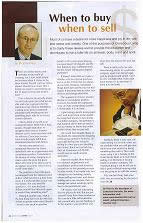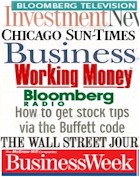| Most
of us have a desire for more happiness and joy of
life with less stress and anxiety. One of the purposes
of Conscious Living is to clarify these desires
and to provide the education and techniques to live
a fuller life on all levels: body, mind and spirit.
There are similar
desires and anxieties in the world of investing.
For a start, most people feel anxious when it comes
to the share market. Should I sell my Telstra shares?
Should I buy more? Was I foolish (or smart) to avoid
taking up the T3 issue? Is it too late to start
now?
Even when they do actually invest,
they are never quite sure what they are after and
what is going to be the outcome of their choices.
Something is eating away at their investment enjoyment
and investing success, something that I refer to
as chronic investor diseases.
|
 |
I like to think of myself
as an investment healer. What I do is help people through
education to recognise their chronic investor diseases
and to overcome them with my software Conscious Investor.
I want to help people fulfill their investment potential
and desires.
The two most pernicious
investment diseases that I have identified I refer to
as getevenitis and consolidatus profitus. Getevenitis
is the disease of always hanging on to shares when the
price has gone down. We want to be able to say to our
spouse or partner, “Don’t worry. It will come
back.”
The problem is that if the
price has dropped from $5.00 to, say, $4.00, what we own
is a $4.00 stock. It is irrelevant that it once was $5.00.
The only sensible question is, “If I now had $4.00,
would I buy this stock again or would I buy something
else?”
Putting it another way,
what is the best thing that I can do with $4.00 to get
the most value? Should I invest in the stock in question
(which in this case means keeping your purchase)? Or should
I use the $4.00 to buy a different stock (which means
selling your original purchase)?
It doesn’t mean that
we made a mistake with the original purchase. Just as
in life, I think that we always do our best. However,
sometimes things don’t turn out the way we had hoped.
It becomes time to make new choices and change directions.
The opposite chronic investor
disease is consolidatus profitus. Everyone has heard the
expression “you can’t go wrong taking a profit.”
Unfortunately it is not true.
Upon taking a profit, most
people can’t wait to get back in the market by using
their money to buy shares in another company. The problem
is that research shows that they tend to put their money
in shares that under perform those that they just sold.
We could have bought shares
in Westfield, the international shopping centre group
started in Australia, 20 years ago feeling very smug by
selling in a few years and doubling our money. But if
we had held on, then an investment of $10,000 would now
be worth around $250,000.
Extensive studies show that
the two diseases of getevenitis and consolidatus profitus
cost investors around 4-5% per year. In other words, if
we made only two changes to our investing, namely always
selling our losers and always holding on to our winners,
then on average our return would go up by 4-5% per year.
Of course, I am not advocating
that we always do this. But just to ask yourself if you
have these tendencies. You can do a little self-evaluation.
Ask yourself why you are holding on to the shares in your
portfolio and what were the reasons for your last sales.
There is really only one
rule about buying shares in a particular company apart
from being happy with its products and values. Can I be
very confident that I will make more money if I do this
than if I leave it in the bank?
Similarly, there is only
one rule when to sell. Do so only when you are confident
that you will get more value from your money by doing
something else with it. This could mean using it for a
holiday to the Great Barrier Reef, or it could mean putting
it in the bank or buying shares in another company. The
important thing is not to sell just to take a profit without
knowing what you are going to do with the money.
Oh, one last thing.
Take your time. You are investing for the rest of your
life.
John Price is CEO of Conscious
Investing. Email johnprice@conscious-investor.com.




